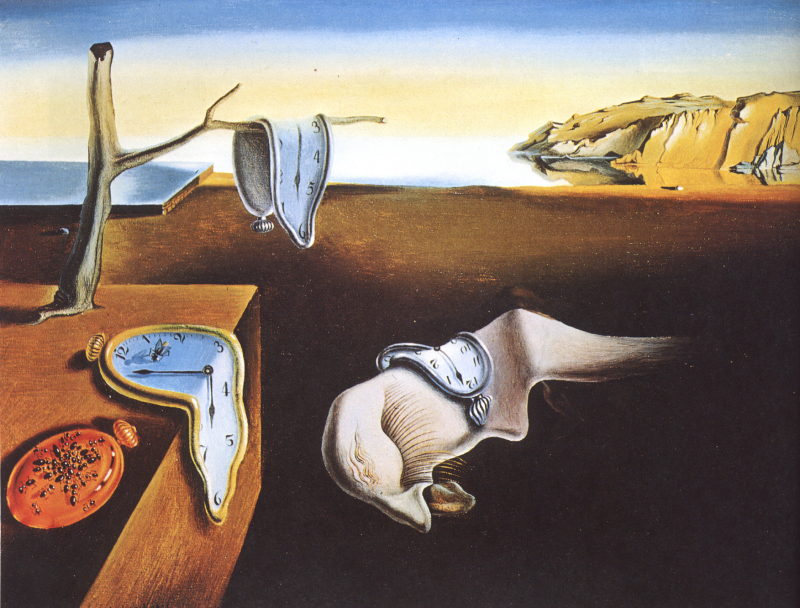The Persistence of Memory
Salvador Dalí's "The Persistence of Memory" is a captivating painting that explores the fluidity of time. This 1931 masterpiece is often called "Melting Clocks." It resides in the Museum of Modern Art in New York City and stands as one of the most celebrated works of Surrealism.
At first glance, the melting pocket watches catch your eye. They drape over the landscape and strange creature-like pieces of soft cheese. Dalí's concept of "softness" and "hardness" is at play here, challenging the rigidity of time. While some think these melting clocks reflect Einstein's theory of relativity and the fluid nature of time. Dalí himself attributed the inspiration to a surreal perception of a Camembert cheese melting in the sun. This typical Dalí twist adds a layer of whimsy and unpredictability to the interpretation of the piece.
In the middle of the composition, a strange creature appears in an abstract form that Dalí often used as a self-portrait. This "monster" has a closed eye with lashes. It might be dreaming. It's a fading, dream-like figure, much like the ones we struggle to remember upon waking. The creature seems to be a nod to Hieronymus Bosch's work. It suggests a deep dive into the human psyche and dreams.
The painting is not just about the surreal landscape but also about decay and the passage of time. The ants swarming over the orange clock symbolize this decay, a common theme in Dalí's work. In contrast, a solitary fly casts a human-like shadow. Perhaps it alludes to the presence and impact of humans in the world of dreams.
Dalí's use of precise painting techniques to portray dream-like, irrational scenes invites viewers into a world where time and reality are fluid. The rocky landscape is inspired by Catalonia's Cap de Creus. It adds a touch of the familiar to the otherwise surreal scene. The foreboding shadow in the foreground suggests an unseen presence or future. That adds to the painting's mysterious aura.
Dalí revisited this theme in "The Disintegration of the Persistence of Memory" (1954), where he shows the original work fragmenting. It reveals more layers and complexities. This, along with his various lithographs and sculptures on the theme, shows his continued fascination with the fluidity of time.
Key Takeaways:
- Title: The Persistence of Memory
- Artist: Salvador Dalí
- Year: 1931
- Medium: Oil on canvas
- Size: 24 cm x 33 cm (9.5 in x 13 in)
- Location: Museum of Modern Art, New York City













